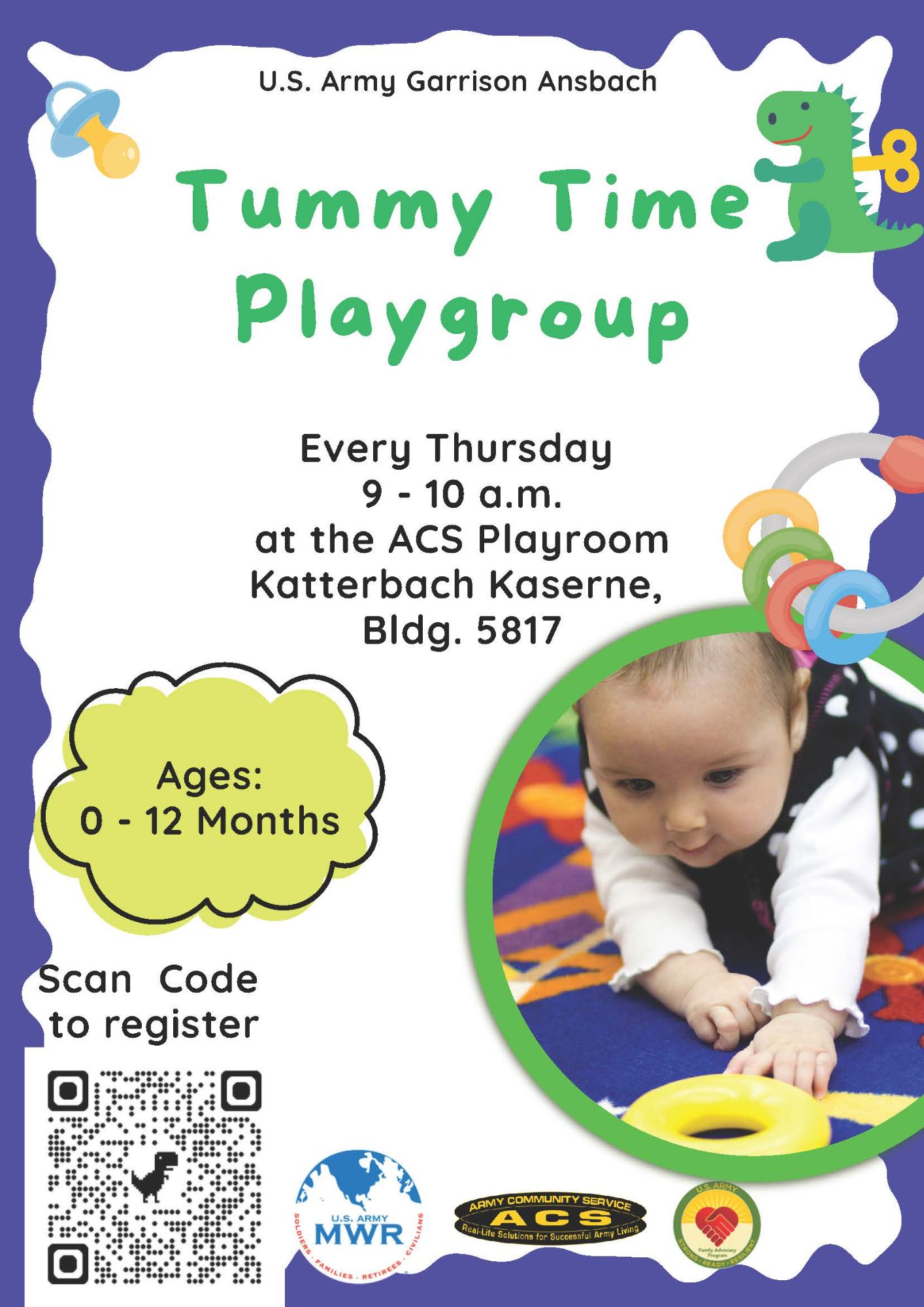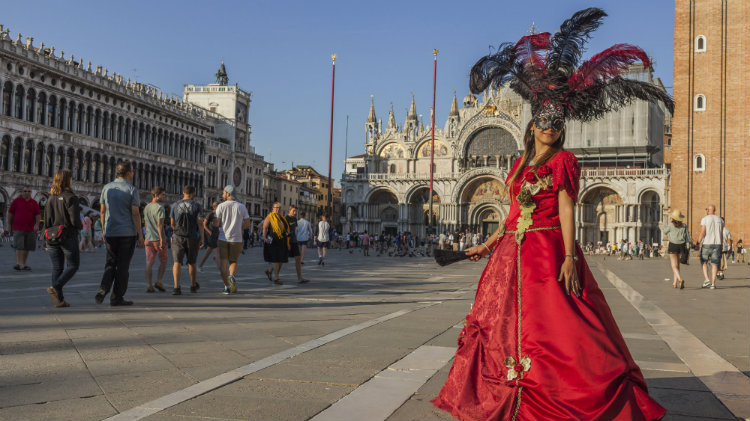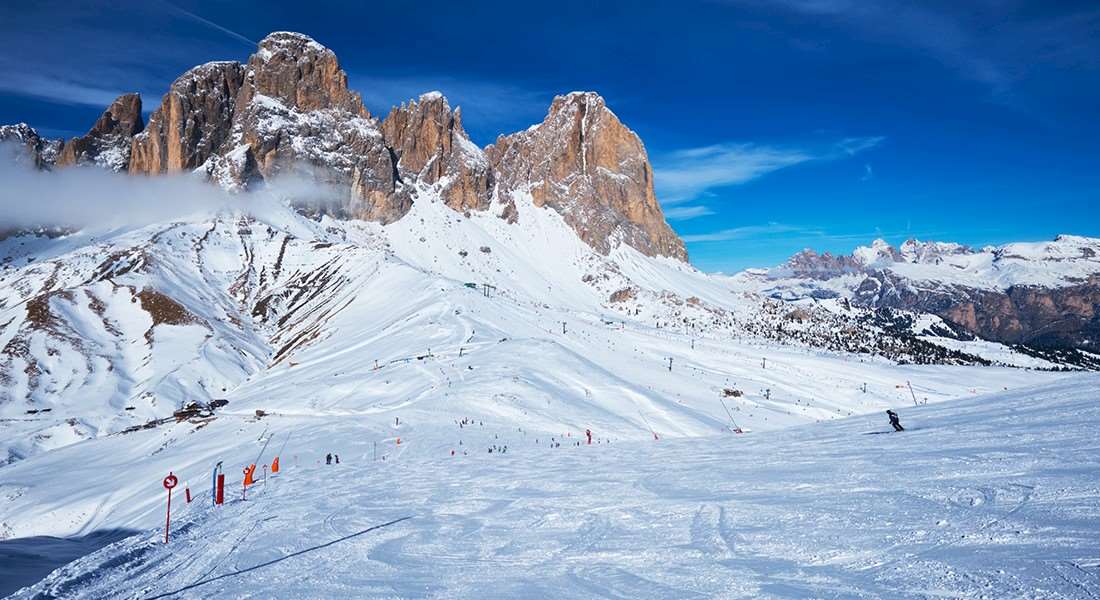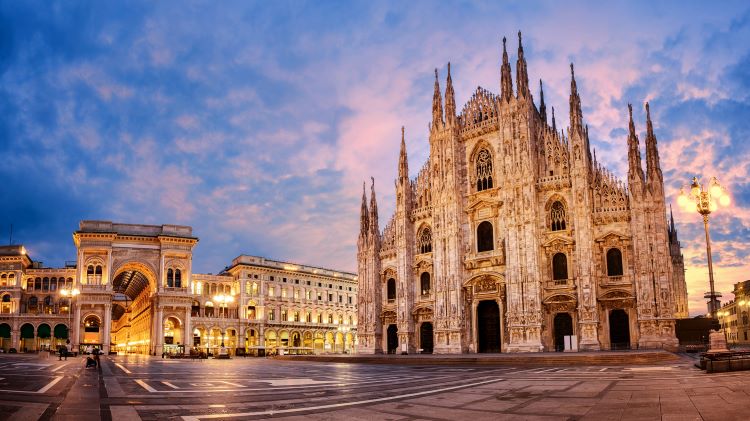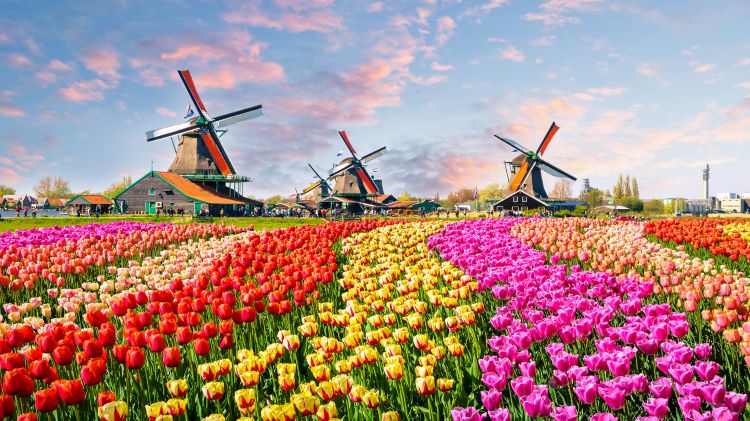- Pula, Croatia
-
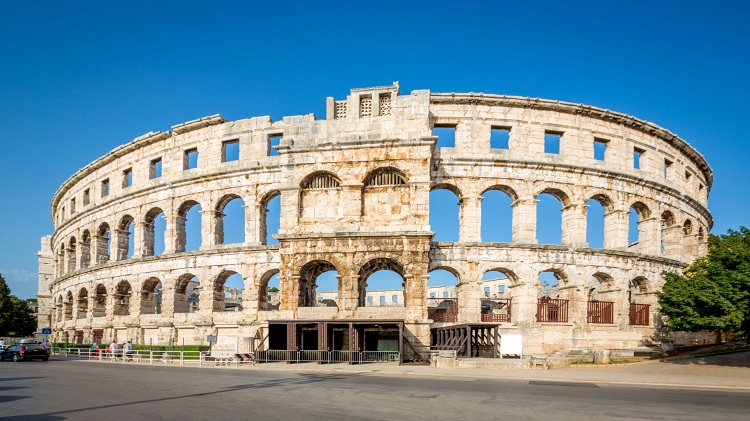
Set beside the glittering Adriatic Sea, Pula is home to world-class festivals, fresh and affordable cuisine, and the most complete Roman colosseum in the world. Here's why you need to get there now...
Pula was an important provincial centre during the later period of the Roman empire and its legacy of public buildings from the time is among the most impressive in Europe.
The star, of course, is the Arena. Constructed between 27 BC-68 AD, it is the only Roman amphitheatre in the world with a complete circle wall and one of Croatia’s architectural gems. It was built to hold 20,000 spectators and is still used today as an outdoor cinema and to host events as diverse as ice hockey, foodie markets and Tom Jones concerts.
The Temple of Augustus, in the city’s old Forum, is impressive too. Bombed during the Second World War, it was painstakingly rebuilt and today houses the Pula Museum of Archaeology. Other Roman relics worth seeking out include the Arch of Sergius and an impressive mosaic floor, discovered by chance after the buildings near Chapel of St. Maria Formosa were destroyed during WWII.
Istria was part of Italy until 1947, and the influence of Italian cuisine is still apparent in Pula. Pizza, pasta and gelato are staples. At times it feels that you are dining in a far-flung corner of Tuscany.
Pula is also a major fishing port, so the seafood there is excellent too. Head to the restaurants dotted along the Limski Canal for the freshest oysters and mussels.
Istria is also famed for its white truffles. Grated on to fuži pasta (small rolled pasta sheets with veal sauce), it is a rare treat for your tastebuds. Head to Restaurant Zigante for a wide range of truffle-inspired dishes, or hunt for your own on one of Pula’s unique truffle tours in the Motovun Forest.
Throughout the summer, Pula transforms into a city of festivals, with every public space hosting international concerts, plays and films. Watch a film in the old Austro-Hungarian Kastel, enjoy a classical concert in the Forum, and take your pick of any number of cultural events in the Arena. There is a host of modern music festivals held in and around the city too, covering everything from reggae through to drum and bass.
One of Pula’s main attractions is the Lighting Giants installation in Uljanik shipyard. A series of cranes are illuminated as part of a light show each evening between 9pm and midnight. Each show starts on the hour and lasts 15 minutes.
The annual Visualia festival sees the Lighting Giants illuminated in new innovative performances each year. Displays of 3D video mappings, as well as visual and audiovisual installations make up the three-day long festival.
The climate and soil of Istria are perfect for producing wine. Wine growing is in the blood of the local people and the region is famous for its top quality muscats, merlots and cabernet sauvignons.
For an authentic taste of Istria, try a white wine made from the indigenous malvasia grapes. Full, rounded and harmonious, it has notes of the local acacia flowers and is perfect with local seafood dishes. For heartier meals, the local Coronica Malvazija is recommended.
The local rakija is worth seeking out too. In Istria, Rakija comes in honey and mistletoe varieties, renowned for their sweet flavour and yellow-brown tint. It is a popular aperitif and a bottle makes a perfect souvenir of your stay in Pula.
Although Pula is the largest city in Istria, nature is never far way.
Just to the north of the city you’ll find Brijuni National Park, a collection of densely wooded islands. It’s not just about the sparkling seas and white beaches - you’ll also find Roman villas, a Knights Templar church and dinosaur footprints from the Cretaceous Period. Head to Fazana where boats leave regularly for the islands.
Head south and you’ll find Cape Kamenjak, a craggy headland that marks the southern most tip of the Istrian peninsula. A world away from the slick resorts elsewhere on the Adriatic, it’s easy to find a rocky cove or shingle beach all to yourself. If you’re brave enough, there are plenty of cliffs to jump off, just like the locals.
Source: https://www.wanderlust.co.uk/content/top-5-reasons-must-do-pula-croatia/
- Keukenhof Gardens, Holland
-
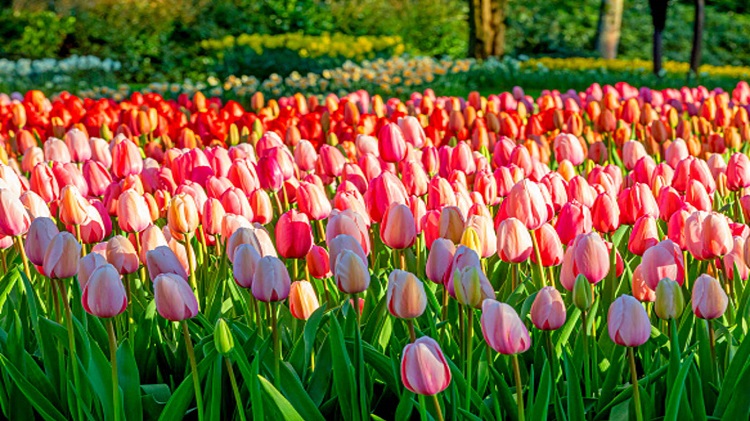
Keukenhof, also known as the Garden of Europe, is one of the world's largest flower gardens, situated in the town of Lisse, in the Netherlands. According to the official website, Keukenhof Park covers an area of 32 hectares and approximately 7 million flower bulbs are planted in the gardens annually.
Enjoy some of the virtual tours produced by the Keukenhof Gardens and other visitors.
https://keukenhof.nl/en/nieuws/360-tour-door-keukenhof/
- Copenhagen, Denmark
-

The premier capital of Northern Europe is Scandinavia's most fantastic city and the center of the most dynamic region in Europe, the Øresund Region. The city is one of Europe's oldest capitals with an exclusive royal touch - the monarchy in Denmark is the oldest in the world. Here you’ll find what you need to know about the beautiful city of Copenhagen!
Because of the fascinating architecture, many parks, gourmet restaurants and other attractions Copenhagen is a very popular place to be. Copenhagen has been nominated the best city by several organizations for livability, sustainability and other factors.
We know what’s important in Copenhagen and have information on the biggest concerts, shows and other events. Also find out what to eat & drink while visiting Copenhagen.
Here at Copenhagen.com you’ll also find an attraction guide that includes everything from nightlife to Tivoli. Do you need accommodation? No problem! We have a more or less complete guide of hotels and hostels in Copenhagen. You can find the right hotel by sorting with distance, price, popularity and other features.
Explore COPENHAGEN.COM to find useful information about how to plan your visit, what to do, what's going on and much more. We wish you welcome and hope you will enjoy your stay!Copenhagen, also known as Kongens village, has beautiful docksides to wander along and the famous pedestrian promenade Stroget (Stroget) which stretches from the Town Hall Square to Kongens Nytorv. There are plenty of stores, large malls, restaurants and cafes. Among the throngs of people, you can even find an occasional good theater or street musician.
Many people travel to Copenhagen to visit the famous Tivoli amusement park or Copenhagen Zoo (Zoological definatley). At the Sound, next to the Öresund Bridge, you will find The Blue Planet (National Aquarium Denmark), which is Northern Europe's largest aquarium. The popular amusement park "Bakken" or Dyrehavsbakken is located north of town. This park was opened back in 1583 and is regarded as the world's oldest amusement park.
Denmark is home to the world's oldest monarchy and the royal capital is home to a number of beautiful castles. The Amalienborg Palace serves as the royal couple's home in winter, while during the warmer part of the year they spend their time in the Summer Palace Marselisborg or else in the Queen's summer residence Gråsten Palace. Copenhagen is also is home to the beautiful castles of Christiansborg and Rosenborg.
Denmark consists of a multitude of islands and the peninsula of Jutland. Copenhagen is located partly on the island of Zealand and partly on the island of Amager. Right in the center is the Folketing (Danish Parliament) and the cathedral Vor Frue Kirke (Church of Our Lady). Another popular attraction is the observatory Tycho Brahe Planetarium. In Copenhagen, like one beer and town houses several old breweries, the Stock Exchange and Brygghuset on Slotsholmen. You can also visit Carlsberg's first brewery and for interested parties the “Visit Carlsberg” museum can be worth a visit.
Copenhagen is a coastal town and the shoreline outside the citadel sits the little mermaid - a well-known sculpture that depicts the protagonist of Hans Christian Andersen's fairy tale "The Little Mermaid". Anyone who wants to take a dip find several fine beaches around the city. There is a harbor bath on Bruges (Bryggen) Island and the new Amager Beach. Both of these attractions also offer a wide range of leisure activities in addition to swimming. In the city there are also several beautiful parks, which Kongens Have, Amager Fælled and the botanical park botanical Have.
- Brussels/Bruges/Ghent, Belgium
-

Dumon Chocolate Shop
Perhaps Bruges' smoothest, creamiest chocolates are at Dumon, just off the Markt. Nathalie Dumon runs the store with Madame Dumon still dropping by to help make their top-notch chocolate daily and sell it fresh. The Dumons don't provide English labels because they believe it's best to describe their chocolates in person — and they do it with an evangelical fervor. Try a small mix-and-match box to sample a few out-of-this-world flavors, and come back for more of your favorites. The family only runs the original location just north of the Markt at Eiermarkt 6. A bigger, glitzier Dumon branch is at Simon Stevinplein 11. While technically the Dumon flagship store, this lacks the family-run charm of the original. But they produce similar chocolates, offer additional types of pralines (including sugar-free varieties), and have a full coffee and hot chocolate bar. A third, less-interesting branch is farther south, at Walstraat 6.
The Chocolate Line
Locals and tourists alike flock to The Chocolate Line to taste the gastronomique varieties concocted by Dominique Person — the mad scientist of chocolate. His unique creations mix chocolate with various, mostly savory, flavors. Even those that sound gross can be surprisingly good (be adventurous). Options include Havana cigar (marinated in rum, cognac, and Cuban tobacco leaves), lemongrass, lavender, ginger (shaped like a Buddha), "Deadly Delicious" (a chocolate skull filled with raspberry and hazelnut paste), saffron curry, spicy chili, Moroccan mint, Pop Rocks/cola chocolate, wine vinegar, fried onions, bay leaf, sake, lime/vodka/passion fruit, wasabi, and tomatoes/olives/basil. The kitchen — busy whipping up 80 varieties — is on display in the back. Enjoy the window display, refreshed monthly.
Bruges' Bell Tower and its carillon
Most of this bell tower has presided over the Markt since 1300, serenading passersby with cheery carillon music. The octagonal lantern was added in 1486, making it 290 feet high — that's 366 steps. The view is worth the climb...and probably even the pricey admission. Some mornings and summer evenings, you can sit in the courtyard or out on the square to enjoy a carillon concert (generally mid-June–mid-Sept Mon and Wed at 21:00; schedule posted on courtyard wall).
Basilica of the Holy Blood
Originally the Chapel of Saint Basil, this church is famous for its relic of the blood of Christ, which, according to tradition, was brought to Bruges in 1150 after the Second Crusade. The lower chapel is dark and solid — a fine example of Romanesque style. The upper chapel (separate entrance, climb the stairs) is decorated Gothic. An interesting treasury museum is next to the upper chapel.
Lace Center
At this lace museum and school, you can learn about traditional lacemaking and then see lace actually being made. In the demonstration room upstairs, observe as ladies toss bobbins madly while their eyes go bad.
Church of Our Lady
The church stands as a memorial to the power and wealth of Bruges in its heyday. If you like tombs and church art, pay to wander through the apse, but note that the church is undergoing a major, years-long renovation, during which different parts of the interior will be closed to visitors.
Sint-Janshospitaal Memling Collection
Located in the former hospital wards and church of St. John's Hospital (Sint Janshospitaal), the Memling Museum offers a glimpse into medieval medicine, displaying surgical instruments, documents, and visual aids as you work your way to the museum's climax: several much-loved paintings by the greatest of the Flemish Primitives, Hans Memling. His St. John Altarpiece triptych is a highlight, as is the miniature, gilded-oak shrine to St. Ursula.
De Halve Maan Brewery Tour
Belgians are Europe's beer connoisseurs, and this handy tour is a great way to pay your respects. The brewery makes the only beers brewed in Bruges: Brugse Zot ("Fool from Bruges") and Straffe Hendrik. The happy gang at this working-family brewery gives 45-minute tours in two languages (lots of steep steps but a great rooftop panorama). Avoid crowds by visiting at 11:00.
Royal Museums of Fine Arts of Belgium
This sprawling complex houses a trio of museums showing off the country's best all-around art collection. The Old Masters Museum — featuring Flemish and Belgian art of the 14th–18th centuries — is packed with a dazzling collection of masterpieces by Van der Weyden, Bruegel, Bosch, and Rubens. The Fin-de-Siècle Museum covers art of the late 19th and early 20th centuries, including an extensive Art Nouveau collection. The Magritte Museum contains more than 200 works by the Surrealist painter René Magritte. Although you won't see many of Magritte's most famous pieces, you will get an unusually intimate look at the life and work of one of Belgium's top artists.
European Parliament
Europe's governing body welcomes visitors with an exhibit about the European Union and its parliament. You can also follow an audioguide tour of the actual parliament chamber, the "Hemicycle." The parliament's sprawling complex of modern glass buildings is a babel of black-suited politicians speaking 24 different Euro-languages. It's exciting just to be here — a fly on the wall of a place that aspires to chart the future of Europe "with respect for all political thinking...consolidating democracy in the spirit of peace and solidarity."
Ghent doesn't ooze with cobbles and charm, like its rival Bruges — this is a living city, with an urban grittiness and a welcome splash of creative hipster funkiness. Explore its historic quarter, ogle the Van Eyck altarpiece in its massive cathedral, tour its impressive art and design museums, stroll its picturesque embankments, bask in its finely decorated historic gables, and prowl its newly revitalized Patershol restaurant quarter. Ghent is the kind of town that you visit for a few hours…and find yourself wishing you had a few days.
All content was copied from: https://www.ricksteves.com/watch-read-listen/video/tv-show/belgium-bruges-and-brussels
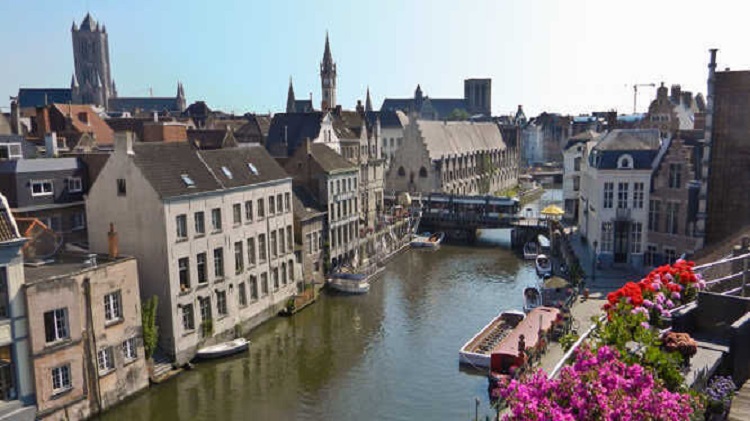
- Paris, France
-

Paris, France's capital, is a major European city and a global center for art, fashion, gastronomy and culture. Its 19th-century cityscape is crisscrossed by wide boulevards and the River Seine. Beyond such landmarks as the Eiffel Tower and the 12th-century, Gothic Notre-Dame cathedral, the city is known for its cafe culture and designer boutiques along the Rue du Faubourg Saint-Honoré.
Here is an awesome virtual tour of most of the Must-See sites in Paris.
https://www.youvisit.com/tour/paris

The Eiffel Tower is a wrought-iron lattice tower on the Champ de Mars in Paris, France. It is named after the engineer Gustave Eiffel, whose company designed and built the tower. Constructed from 1887 to 1889 as the entrance to the 1889 World's Fair, it was initially criticised by some of France's leading artists and intellectuals for its design, but it has become a global cultural icon of France and one of the most recognisable structures in the world. The Eiffel Tower is the most-visited paid monument in the world; 6.91 million people ascended it in 2015. The tower is 324 metres tall, about the same height as an 81-storey building, and the tallest structure in Paris. Its base is square, measuring 125 metres on each side. During its construction, the Eiffel Tower surpassed the Washington Monument to become the tallest man-made structure in the world, a title it held for 41 years until the Chrysler Building in New York City was finished in 1930. It was the first structure to reach a height of 300 metres. Due to the addition of a broadcasting aerial at the top of the tower in 1957, it is now taller than the Chrysler Building by 5.2 metres.

The Arc de Triomphe de l'Étoile is one of the most famous monuments in Paris, France, standing at the western end of the Champs-Élysées at the centre of Place Charles de Gaulle, formerly named Place de l'Étoile—the étoile or "star" of the juncture formed by its twelve radiating avenues. The location of the arc and the plaza is shared between three arrondissements, 16th, 17th and 8th. The Arc de Triomphe honours those who fought and died for France in the French Revolutionary and Napoleonic Wars, with the names of all French victories and generals inscribed on its inner and outer surfaces. Beneath its vault lies the Tomb of the Unknown Soldier from World War I. As the central cohesive element of the Axe historique, the Arc de Triomphe was designed by Jean Chalgrin in 1806; its iconographic programme pits heroically nude French youths against bearded Germanic warriors in chain mail. It set the tone for public monuments with triumphant patriotic messages. Inspired by the Arch of Titus in Rome, Italy, the Arc de Triomphe has an overall height of 50 metres, width of 45 m and depth of 22 m, while its large vault is 29.19 m high and 14.62 m wide.
Join us on the virtual and video tours of some of the most popular destinations we visit and the ones we would like to in the future!

